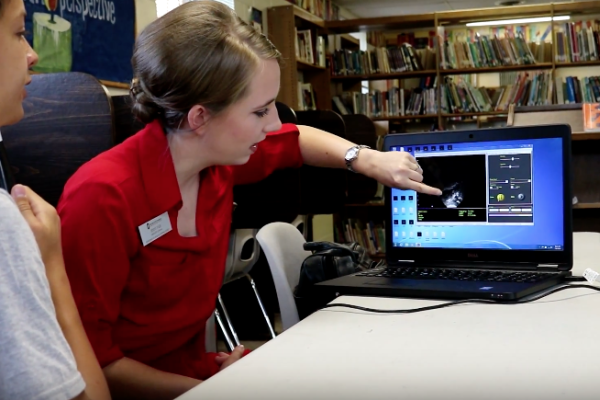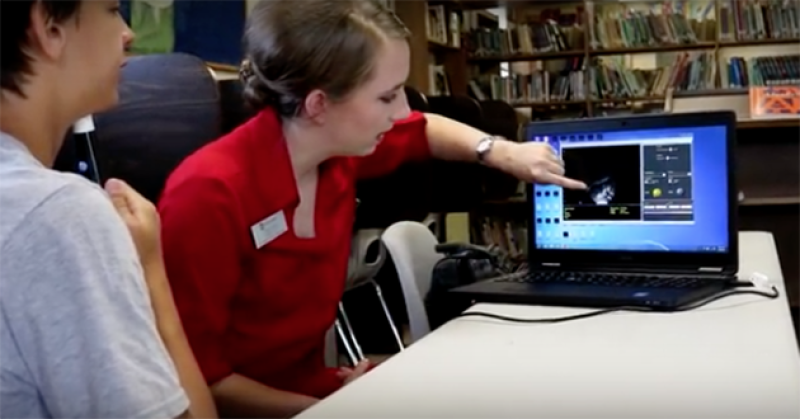Bringing Speech Services to Rural Schools

Shekinah Christian School, located in Plain City, Ohio, does not provide on-site speech-language services for its students — the costs are simply too high for the small, private school. As part of its ongoing efforts to bring much-needed screening and intervention services to underserved communities, Ohio State’s Speech-Language-Hearing Clinic launched a pilot program with Shekinah this past summer.
“We met with school representatives in early 2016 and, in March, began testing more than 60 students in kindergarten through eighth grade,” said Nadine Whiteman, clinical supervisor at Ohio State’s clinic. “Many of the children had never been screened for hearing or speech-language abilities, and we realized that we needed to be in the school for a concentrated period of time.”
For eight weeks Whiteman and graduate students Jenny Fair and Makenzie Laase worked with students to improve their articulation. They specifically addressed the challenging errors for the “r” and “s” sounds.
“By age five, children should be able to pronounce the 'r' and the 's' speech sounds, which frequently occur in the English language,” explained Whiteman. "Not pronouncing correct r’s can have a ripple effect if not addressed in a timely manner. Children may become more self-conscious of their speech, spelling may be affected adversely and they may withdraw from participation in discussions and activities."
How do you assess a sound? And how do you teach a child to produce the correct sound?
Ultrasound imaging.
“Ohio State’s Speech-Language-Hearing Clinic recently began utilizing ultrasound technology,” said Whiteman. “Using ultrasound biofeedback allows children to see and visualize the tongue as it moves, something not possible in traditional speech therapy.”
To use the technology, an ultrasound probe is dabbed with gel and placed under a child’s chin. Sound waves capture real-time images of the tongue, which help the child and the clinician/graduate student see the outline of the tongue’s shape and position.
“It’s really amazing to watch the children when the light bulb goes on,” said Whiteman. “They watch the screen and they have a better understanding of the instructor’s cues. With time and practice, most students will successfully learn the 'r' and 's' sounds.”

For graduate student Jenny Fair, having the opportunity to work in the community allows her to put into practice all she has been learning over the last five to six years.
“Fieldwork makes everything more real. It makes me feel like I’m doing what I’m learning."
By the end of the summer term, all of the students in the Shekinah pilot program were progressing with their production of the “r” and “s” sounds.
Brice Kauffman, Shekinah's school administrator, is pleased.
"Can you imagine being a student who is given an opportunity in a single summer to begin overcoming lifelong speech difficulties? I don't think it's an overstatement to call this pilot program life-changing for some students and their families. I anticipate the work that began this summer with our students will lead to enhanced confidence and greater academic success in the future."
Whiteman and her staff will continue to monitor the progress of the students and intend to expand their services to another private school in the area later this fall.
"Something unique and powerful happens when large well-recognized academic institutions like Ohio State collaborate and assist much smaller schools and the students they serve," said Kauffman.
Students & faculty from @ASCatOSU reach out to rural schools to provide #speech services to kids #TownGown #ASCDaily
